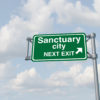Stanford opens its ‘newest’ office building – Kingscote Gardens
Following a year-long renovation project, staff members from 10 university programs have opened offices in the historic Kingscote Gardens building.

The building has been seismically retrofitted, as well as repainted, for its new use as an office space. (Image credit: Aaron Kehoe)
Stanford has completed the renovation of the historic Kingscote Gardens – the elegant Italian Renaissance-style building off Lagunita Drive – and staff members from 10 university programs have opened offices in the three-story building.
The renovation of the 100-year-old apartment building allowed Stanford to consolidate programs that provide services – many of them confidential – for students, faculty and staff in a central location.
Kingscote Gardens, which is set in a lush landscape of lawns, trees and flowering plants, is the home of satellite offices for Counseling and Psychological Services, with a staff of psychiatrists, psychologists and social workers devoted to student mental health and well-being.
The building is also the new home of Institutional Equity and Access and the five programs it oversees, including the Title IX Office and the Office of Sexual Assault and Relationship Abuse Education & Response. In addition, the Faculty Staff Help Center is now located in the building, along with the Office of the Academic Secretary.
See the accompanying sidebar for a full list of programs housed in Kingscote Gardens.
Under the renovation, Kingscote Gardens retained its curved glass sunroom, and gained an elevator and a gently sloping ramp that leads to its porch. Half of its basement was converted to offices and restrooms.
The building, which has been updated to meet current seismic safety standards, also sports a new coat of paint – light taupe with white and orange trim. Benches and picnic tables are scattered throughout the grounds, which are shaded by oaks, redwoods and palms.
Kingscote Gardens, which is set back from Lagunita Drive, is located between the Faculty Club and Harmony House.

Kingscote Gardens was the longest continually occupied apartment building, hosting Stanford affiliates from 1917 to 2015. (Image credit: Aaron Kehoe)
According to the Stanford Historical Society, Kingscote Gardens was the university’s oldest continuously occupied apartment building on campus until 2015, when the university began relocating residents to make way for the renovation project. The Historical Society has included the building on walking tours of historic campus neighborhoods, and examined its architecture, landscape and history in its 2016 book, Historic Houses VII: South San Juan Neighborhood and Stock Farm, Stanford University.
The building’s history dates back to 1917, when Stanford President Ray Lyman Wilbur (1875-1949) authorized a lease to the family of Political Science Professor Burt Estes Howard, who had died suddenly, leaving his wife and three young children with no income, according to Stanford Magazine. The family managed the property and collected rent from visiting scholars. The first tenants paid $25 a month. Over the years, the building has housed students, faculty, staff and alumni.



